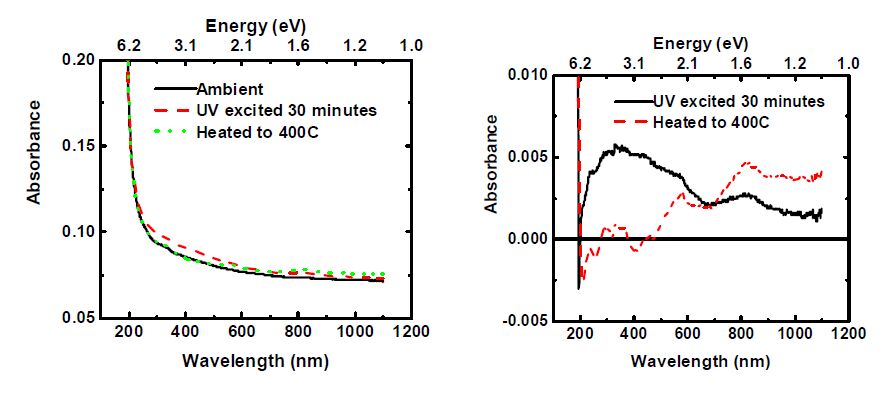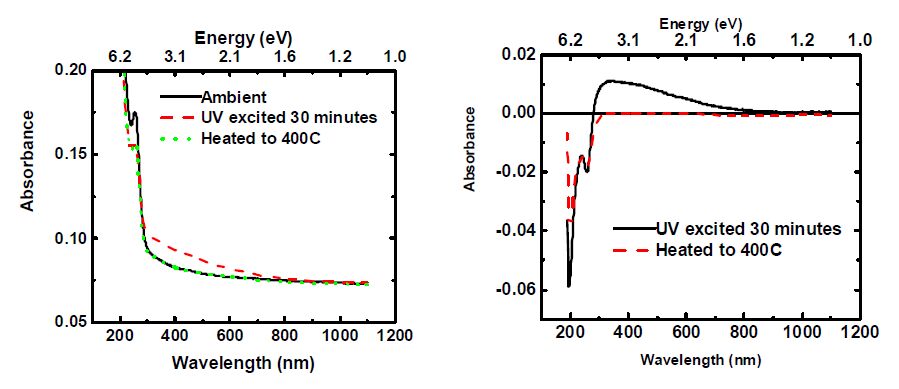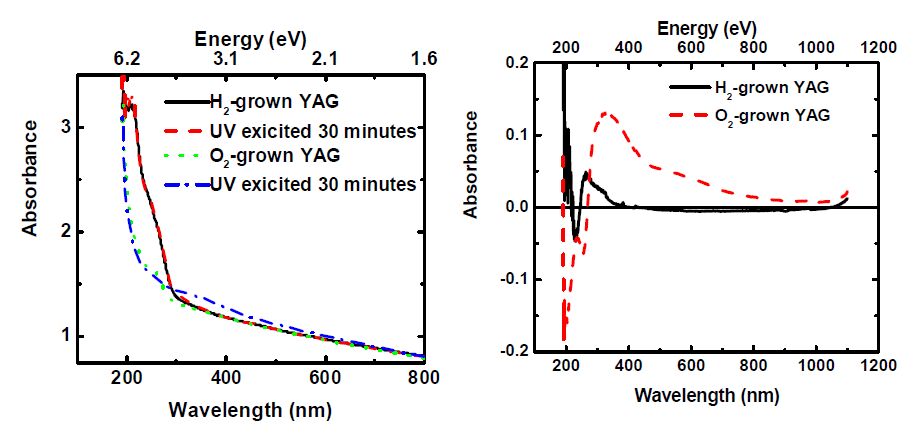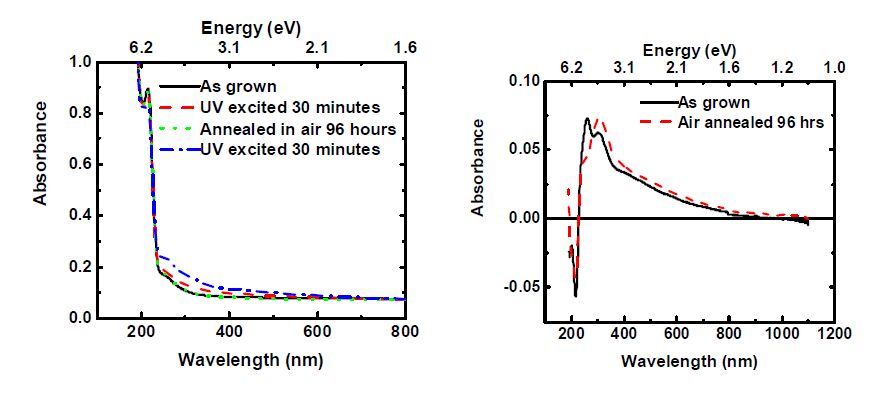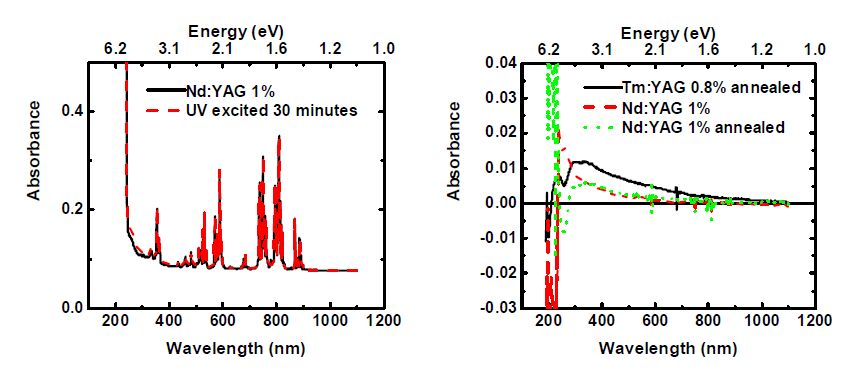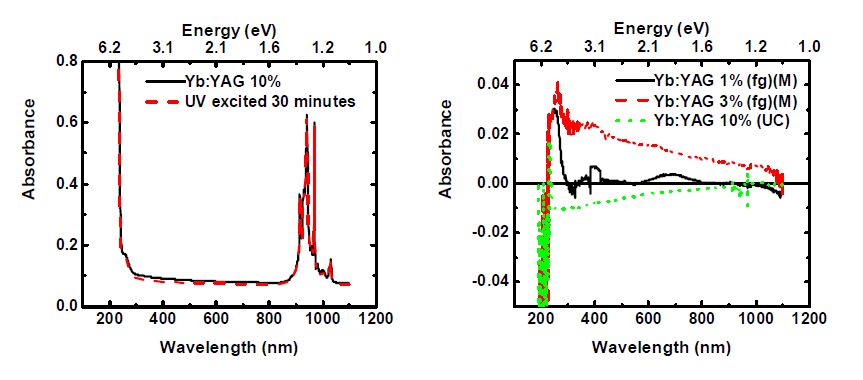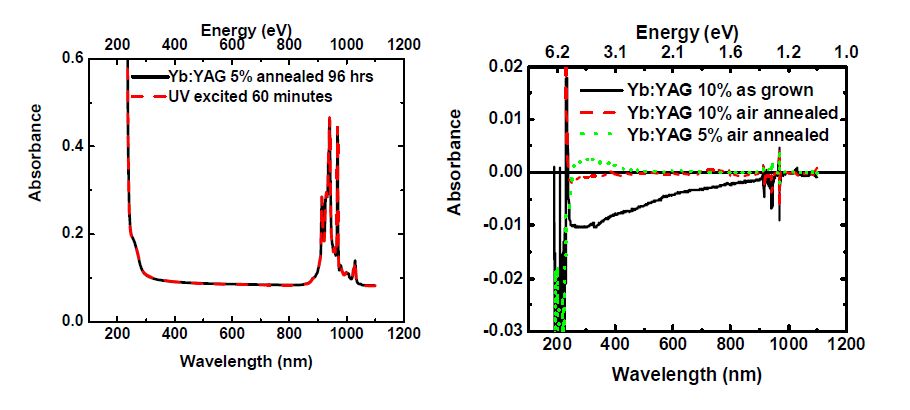| 1.
|
Fatima Zohra Zaoui, Djamel Ouinas, Belkacem Achour, Mabrouk Touahmia, Mustapha Boukendakdji, Enamur R. Latifee, Ahmed A. Alawi Al-Naghi, Jaime Aurelio Viña Olay,
Mathematical Approach for Mechanical Behaviour Analysis of FGM Plates on Elastic Foundation,
2022,
10,
2227-7390,
4764,
10.3390/math10244764
|
|
| 2.
|
Mahnoor Sarfraz, Masood Khan,
Thermodynamic irreversibility analysis of water conveying argentum and titania nanoparticles subject to inclined stretching surface,
2023,
98,
0031-8949,
025205,
10.1088/1402-4896/acab92
|
|
| 3.
|
I. Rashid, T. Zubair, M. I. Asjad, S. Irshad, S. M. Eldin,
The MHD graphene−CMC−water nanofluid past a stretchable wall with Joule heating and velocity slip impact: Coolant application,
2023,
10,
2296-424X,
10.3389/fphy.2022.1065982
|
|
| 4.
|
Amjad Ali, Zainab Bukhari, Muhammad Amjad, Sohail Ahmad, Wasim Jamshed, Sayed M. El Din,
Heat transfer analysis of the MHD stagnation-point flow of third-grade fluid over a porous sheet with thermal radiation effect: An algorithmic approach,
2023,
21,
2391-5471,
10.1515/phys-2022-0227
|
|
| 5.
|
Muhammad Amin Sadiq Murad, Faraidun Kadir Hamasalh, Hajar F. Ismael,
Numerical study of stagnation point flow of Casson-Carreau fluid over a continuous moving sheet,
2023,
8,
2473-6988,
7005,
10.3934/math.2023353
|
|
| 6.
|
S.A. Abdollahi, P. Jalili, B. Jalili, H. Nourozpour, Y. Safari, P. Pasha, D.D. Ganji,
Computer simulation of Cu: AlOOH/water in a microchannel heat sink using a porous media technique and solved by numerical analysis AGM and FEM,
2023,
20950349,
100432,
10.1016/j.taml.2023.100432
|
|
| 7.
|
Yihao Shao, Huai Yang, Xiuya Guo, Huili Wang, Limei Zhu, Xuan Ma, Ruijuan Chen, Shufen Ruan, Lulu Ren, Qian Zheng,
Thermal Conductivity Model of Porous Media Embedded with a Damaged Tree-like Branching Network Considering the Influence of Roughness,
2022,
7,
2504-3110,
5,
10.3390/fractalfract7010005
|
|
| 8.
|
Yasir Nawaz, Muhammad Shoaib Arif, Kamaleldin Abodayeh, Muavia Mansoor,
Finite difference schemes for MHD mixed convective Darcy–forchheimer flow of Non-Newtonian fluid over oscillatory sheet: A computational study,
2023,
11,
2296-424X,
10.3389/fphy.2023.1072296
|
|
| 9.
|
Aziz Ur Rehman, Muhammad Bilal Riaz, Ilyas Khan, Abdullah Mohamed,
Time fractional analysis of Casson fluid with application of novel hybrid fractional derivative operator,
2023,
8,
2473-6988,
8185,
10.3934/math.2023414
|
|
| 10.
|
Mohamed Boujelbene, Sohail Rehman, Sultan Alqahtani, Sultan Alshehery, Sayed M. Eldin,
Thermal transport and magnetohydrodynamics flow of generalized Newtonian nanofluid with inherent irreversibility between conduit with slip at the walls,
2023,
17,
1994-2060,
10.1080/19942060.2023.2182364
|
|
| 11.
|
K Deka, G Sharma, R Paul, R Moulick, S Adhikari, S S Kausik, B K Saikia,
Study of plasma sheath in the presence of dust particles in a magnetic mirror-like field configuration,
2023,
98,
0031-8949,
045608,
10.1088/1402-4896/acc0b4
|
|
| 12.
|
Bing Zhang, Liqin Tang, Hongwei Zhang, Bagh Ali, Nehad Ali Shah, Yongseok Jeon,
Finite element study of nanoparticles spacing and radius on dynamics of water fluid subject to microgravity environment,
2023,
47,
22113797,
106355,
10.1016/j.rinp.2023.106355
|
|
| 13.
|
M. Bilal, M. Safdar, S. Ahmed, R. Ahmad Khan,
Analytic similarity solutions for fully resolved unsteady laminar boundary layer flow and heat transfer in the presence of radiation,
2023,
9,
24058440,
e14765,
10.1016/j.heliyon.2023.e14765
|
|
| 14.
|
Kamran Ahmed, Tanvir Akbar, Iftikhar Ahmed, Taseer Muhammad, Muhammad Amjad,
Mixed convective MHD flow of Williamson fluid over a nonlinear stretching curved surface with variable thermal conductivity and activation energy,
2023,
1040-7782,
1,
10.1080/10407782.2023.2194689
|
|
| 15.
|
Sufian Munawar, Najma Saleem, Dharmendra Tripathi,
Cilia and electroosmosis induced double diffusive transport of hybrid nanofluids through microchannel and entropy analysis,
2023,
12,
2192-8029,
10.1515/nleng-2022-0287
|
|
| 16.
|
Qadeer Raza, M Zubair Akbar Qureshi, Shalan Alkarni, Bagh Ali, Ali Zain, Kanayo Kenneth Asogwa, Nehad Ali Shah, Se-Jin Yook,
Significance of viscous dissipation, nanoparticles, and Joule heat on the dynamics of water: The case of two porous orthogonal disk,
2023,
2214157X,
103008,
10.1016/j.csite.2023.103008
|
|
| 17.
|
Sumera Dero, Mustafa Abbas Fadhel, Liaquat Ali Lund, Nehad Ali Shah,
Multiple solutions of unsteady flow of CNTs nanofluid over permeable shrinking surface with effects of dissipation and slip conditions,
2024,
38,
0217-9849,
10.1142/S0217984924501203
|
|
| 18.
|
Umer Farooq, Musawara Safeer, Jifeng Cui, Muzamil Hussain, Nitasha Naheed,
Forced convection analysis of Williamson-based magnetized hybrid nanofluid flow through a porous medium: Nonsimilar modeling,
2024,
1040-7790,
1,
10.1080/10407790.2023.2300704
|
|
| 19.
|
Yasir Nawaz, Muhammad Shoaib Arif, Amna Nazeer, Javeria Nawaz Abbasi, Kamaleldin Abodayeh,
A two‐stage reliable computational scheme for stochastic unsteady mixed convection flow of Casson nanofluid,
2024,
96,
0271-2091,
719,
10.1002/fld.5264
|
|
| 20.
|
Talha Anwar, Poom Kumam, Essam R. El-Zahar, Kanokwan Sitthithakerngkiet, Shah Muhammad,
Comparative thermal analysis of Nickel and Tantalum based hybrid nanofluid using constant proportional Caputo and Atangana–Baleanu operators with time-controlled condition,
2023,
49,
2214157X,
103202,
10.1016/j.csite.2023.103202
|
|
| 21.
|
Moh Yaseen, Sawan Kumar Rawat, Umair Khan, Ioannis E Sarris, Humera Khan, Anup Singh Negi, Arshad Khan, El-Sayed M Sherif, Ahmed M Hassan, Aurang Zaib,
Numerical analysis of magnetohydrodynamics in an Eyring–Powell hybrid nanofluid flow on wall jet heat and mass transfer,
2023,
34,
0957-4484,
485405,
10.1088/1361-6528/acf3f6
|
|
| 22.
|
Samah Maatoug, Kamel Al-Khaled, Ali Raza, Taher Labidi, Lioua Kolsi, Wathek Chammam, Muqrin Almuqrin, Sami Ullah Khan,
Fractional computations for free convective flow of Casson-hybrid nanofluid flow with sodium alginate and water as based materials,
2024,
38,
0217-9792,
10.1142/S0217979224502400
|
|
| 23.
|
Ikram Ullah, Saira Shukat, Ashwag Albakri, Hamid Khan, Ahmed M. Galal, Wasim Jamshed,
Thermal performance of aqueous alumina–titania hybrid nanomaterials dispersed in rotating channel,
2023,
37,
0217-9792,
10.1142/S0217979223502375
|
|
| 24.
|
Xiaomang Miao, Fahid Riaz, Badr Alotaibi, Manoj Kumar Agrawal, Mohammed Abuhussain, Theyab R. Alsenani, Mansoureh Alizadeh Balderlou, Qing Lin,
Performance enhancement of latent heat thermal energy storage system by using spiral fins in phase change material solidification process,
2023,
176,
09575820,
568,
10.1016/j.psep.2023.05.102
|
|
| 25.
|
Seyed Esmail Razavi, Tohid Adibi, Shams Forruque Ahmed, Suvash C. Saha,
Semi-analytical solution of nanofluid flow with convective and radiative heat transfer,
2024,
38,
0217-9792,
10.1142/S0217979224503454
|
|
| 26.
|
Humaira Yasmin, Azzh Saad Alshehry, Abdul Hamid Ghanie, Rasool Shah,
Stability of non-Newtonian nanofluid movement with heat/mass transportation passed through a hydro magnetic elongating/contracting sheet: multiple branches solutions,
2023,
13,
2045-2322,
10.1038/s41598-023-44640-3
|
|
| 27.
|
F. Ali, A. Zaib, M. Faizan, S.S. Zafar, Shalan Alkarni, Nehad Ali Shah, Jae Dong Chung,
Heat and mass exchanger analysis for Ree-Eyring hybrid nanofluid through a stretching sheet utilizing the homotopy perturbation method,
2024,
54,
2214157X,
104014,
10.1016/j.csite.2024.104014
|
|
| 28.
|
Kanwal Jabeen,
Bioconvective Carreau nanofluid flow with magnetic dipole, viscous, and ohmic dissipation effects subject to Arrhenius activation energy,
2024,
85,
1040-7782,
2341,
10.1080/10407782.2023.2221005
|
|
| 29.
|
Danial Habib, Nadeem Salamat, Sajjad Hussain, Sohaib Abdal, Ahmed Kadhim Hussein, Bagh Ali,
Variable viscosity effects on dynamic of non-Newtonian fluid nanofluid over a paraboloid of revolution via Keller box method,
2024,
139,
2190-5444,
10.1140/epjp/s13360-024-05242-8
|
|
| 30.
|
Dania Qaiser, Naseer M. Khan,
Optimizing entropy in mixed convective MHD dissipative nanofluid with cross-diffusion and nonlinear velocity slip,
2024,
1040-7782,
1,
10.1080/10407782.2024.2345865
|
|
| 31.
|
Prabhat Patel, Ravindra Pathak,
Experimental analysis and comparison of thermophysical properties of the three different hybrid nano-catalyst blended diesel fuels,
2024,
1448-4846,
1,
10.1080/14484846.2024.2383041
|
|
| 32.
|
Qadeer Raza, Xiaodong Wang, Bagh Ali, M. Zubair Akbar Qureshi, Ali J. Chamkha,
Heat and mass transfer phenomenon and aligned entropy generation with simultaneous effect for magnetized ternary nanoparticles induced by ferro and nano-layer fluid flow of porous disk subject to motile microorganisms,
2023,
1040-7782,
1,
10.1080/10407782.2023.2292767
|
|
| 33.
|
Soniya Hegde, N Srikantha, Ahmed Kadhim Hussein,
Optimisation of time-dependent Sisko flow in a wire coating process using response surface methodology,
2024,
98,
0973-7111,
10.1007/s12043-024-02761-y
|
|
| 34.
|
B. Lavanya, J. Girish Kumar, M. Jayachandra Babu, C.S.K. Raju, Bander Almutairi, Nehad Ali Shah,
Entropy generation minimization in the Carreau nanofluid flow over a convectively heated inclined plate with quadratic thermal radiation and chemical reaction: A Stefan blowing application,
2024,
13,
2212540X,
233,
10.1016/j.jppr.2024.04.004
|
|
| 35.
|
H. Ashraf, Sadia Sabir, A.M. Siddiqui, Hamood Ur Rehman, Bander Almutairi, Nehad Ali Shah,
Heat transfer analysis of temperature dependent viscosity Johnson–Segalman fluid film flow on a vertical heated belt,
2023,
49,
2214157X,
103362,
10.1016/j.csite.2023.103362
|
|
| 36.
|
Fehmi Gamaoun, B. M. Shankaralingappa, K. Thanesh Kumar, B. Shanker, Raman Kumar, R. J. Punith Gowda,
Consequence of the direction of uniform horizontal magnetic field on nanolubricant flow over a permeable rotating disk,
2024,
38,
0217-9849,
10.1142/S0217984924501732
|
|
| 37.
|
Humaira Yasmin, Showkat Ahmad Lone, Hussam Alrabaiah, Zehba Raizah, Anwar Saeed,
A numerical investigation of the two-dimensional magnetohydrodynamic water-based hybrid nanofluid flow composed of Fe3O4 and Au nanoparticles over a heated surface,
2024,
13,
2191-9097,
10.1515/ntrev-2024-0010
|
|
| 38.
|
Sanatan Das, Tilak Kumar Pal, Rabindra Nath Jana,
Thermal flow of dust particulates-laden fluid in a slanted channel subject to magnetic force, radiant heat flux, and slip and periodic thermal conditions,
2024,
2196-4378,
10.1007/s40571-024-00761-8
|
|
| 39.
|
Mahi Jaiswal, B. N. Hanumagowda, P V Ananth Subray, S. V. K. Varma, Umair Khan, Ioannis E. Sarris, El-Sayed M. Sherif,
Thermal scrutinization of a triangular porous fin induced by linear and nonlinear temperature-dependent heat generation and magnetic field effect: the case of Darcy model,
2024,
1951-6355,
10.1140/epjs/s11734-024-01114-5
|
|
| 40.
|
Kefeng He, Jiale Chen, Jinying Yu, Lizhe Liang, Zhi Qun Tian,
The mechanism of boiling heat transfer of polycarboxylate superplasticizer modified stereotaxically constructed graphene water-based nanofluid: Experiment and molecular dynamics simulation,
2024,
246,
13594311,
122956,
10.1016/j.applthermaleng.2024.122956
|
|
| 41.
|
Z. Abbas, T. Rahim, J. Hasnain, N. Abid, Z.M. Shah,
Entropy generation analysis of multi-mass diffusion in a nanofluid-interfaced three-phase viscous fluid in an inclined channel,
2023,
49,
2214157X,
103368,
10.1016/j.csite.2023.103368
|
|
| 42.
|
Humaira Sharif, Bagh Ali, Iqra Saman, Nehad Ali Shah, Magda Abd El‐Rahman,
Significance of tri‐hybrid nanoparticles on the dynamics of Ellis rotating nanofluid with thermal stratification,
2024,
104,
0044-2267,
10.1002/zamm.202300932
|
|
| 43.
|
Kezheng Zhang, C.S.K. Raju, Kiran Sajjan, Bander Almutairi, Nehad Ali Shah, Sayed M. Eldin,
Nonlinear free convective with longitudinal slits in the presence of super-hydrophobic and non-hydrophobic microchannels in a suspension of nanoparticles: Multi-Linear Regression Analysis,
2023,
49,
2214157X,
103138,
10.1016/j.csite.2023.103138
|
|
| 44.
|
Jian Wang, Nehad Ali Shah, Bander Almutairi, Oh Kyung Kwon, Jae Dong Chung,
Bvp4c approach and duality of hybrid nanofluid over extending and contracting sheet with chemical reaction and cross-diffusion effects,
2024,
57,
22113797,
107362,
10.1016/j.rinp.2024.107362
|
|
| 45.
|
Shilpa B., Pudhari Srilatha, Umair Khan, Naveen Kumar R., Samia Ben Ahmed, Raman Kumar,
Numerical study of thermal and solutal advancements in ZnO–SAE50 nanolubricant flow past a convergent/divergent channel with the effects of thermophoretic particle deposition,
2023,
5,
2516-0230,
6647,
10.1039/D3NA00816A
|
|
| 46.
|
Madhu J, Shreedevi Kalyan, Yamanappa Gudagi, Varun Kumar R S, Raman Kumar, S. Sureshkumar,
Fluid sustainability by the effect of microrotational flow and chemical reactions in a vertical channel,
2024,
0228-6203,
1,
10.1080/02286203.2024.2319008
|
|
| 47.
|
Zakir Hussain, Asad UR Rehman, Sergei Zuev, Kaouther Ghachem, Khurram Javid, Lioua Kolsi, Sami Ullah Khan,
Hydrodynamic instability of graphene oxide-water (GO/H2O) suspension with thermo-capillary layers of shear-thinning fluid,
2024,
38,
0217-9792,
10.1142/S0217979224501650
|
|
| 48.
|
Sun Yi, Azher M. Abed, Ahmed Deifalla, M. Riaz, Theyab R. Alsenani, Samia Elattar, Chun Yulei, Saleh Al Sulaie,
Exergoeconomic evaluation of a novel multigeneration process using solar driven Kalina cycle integrated with gas turbine cycle, double-effect absorption chiller, and liquefied natural gas cold energy recovery,
2023,
176,
09575820,
271,
10.1016/j.psep.2023.05.077
|
|
| 49.
|
Abdul Rauf, Hafiza Khadija Khan, Nehad Ali Shah,
Exploring the influence of morphology on magnetized Ree–Eyring tri‐hybrid nanofluid flow between orthogonally moving coaxial disks using artificial neural networks with Levenberg–Marquardt scheme,
2024,
104,
0044-2267,
10.1002/zamm.202400147
|
|
| 50.
|
Liaqat Ali, Pardeep Kumar, Hemant Poonia, Sujesh Areekara, Retna Apsari,
The significant role of Darcy–Forchheimer and thermal radiation on Casson fluid flow subject to stretching surface: A case study of dusty fluid,
2024,
38,
0217-9849,
10.1142/S0217984923502159
|
|
| 51.
|
J.K. Madhukesh, G.K. Ramesh, Krishna B. Chavaraddi, Emad H. Aly, Bander Almutairi, Nehad Ali Shah,
Impact of active and passive control of nanoparticles in ternary nanofluids across a rotating sphere,
2023,
54,
22113797,
107069,
10.1016/j.rinp.2023.107069
|
|
| 52.
|
Yasir Nawaz, Muhammad Shoaib Arif, Kamaleldin Abodayeh, Atif Hassan Soori, Umer Javed,
A modification of explicit time integrator scheme for unsteady power-law nanofluid flow over the moving sheets,
2024,
12,
2296-598X,
10.3389/fenrg.2024.1335642
|
|
| 53.
|
Heng Chen, Ibrahim B. Mansir, Bhupendra Singh Chauhan, Ahmed Al-Zahrani, Ahmed Deifalla, Yinhai Hua, Fan Peng,
A comprehensive numerical study on the effectiveness of a rotational-based PTC collector integrated porous foam and PV module,
2023,
215,
09601481,
118869,
10.1016/j.renene.2023.05.127
|
|
| 54.
|
Paresh Vyas, ,
Darcy-Forchhiemer thermofluidics of Micropolar-Casson fluid adjacent to a non-isothermal vertical plate with velocity slip using homotopy analysis method: Cattaneo-Christov flux,
2023,
1040-7790,
1,
10.1080/10407790.2023.2296075
|
|
| 55.
|
Abdul Rauf, Fiaz Ahmad, Nehad Ali Shah,
Exploring the influence of nanolayer morphology on magnetized tri-hybrid nanofluid flow using artificial neural networks and Levenberg–Marquardt optimization,
2024,
1040-7790,
1,
10.1080/10407790.2024.2346922
|
|
| 56.
|
Thimlapura Nagaraju Tanuja, Linganna Kavitha, Pudhari Srilatha, Umair Khan, Sibyala Vijaykumar Varma, Rangaswamy Naveen Kumar, Amal Abdulrahman, Mohammed Modather Mohammed Abdou,
Effects of dissipation and radiation on the Jeffrey fluid flow in between nano and hybrid nanofluid subject to porous medium,
2024,
104,
0044-2267,
10.1002/zamm.202300852
|
|
| 57.
|
E. O. Titiloye, A. T. Adeosun, Mojeed T. Akolade, Y. O. Tijani, J. O. Olabode,
THERMAL CRITICALITY OF ELECTROMAGNETOHYDRODYNAMIC REACTIVE SQUEEZED CASSON MATERIAL IN A COMBUSTIBLE CHANNEL: A SPECTRAL APPROACH
,
2023,
15,
1940-2503,
69,
10.1615/ComputThermalScien.2023043611
|
|
| 58.
|
Yi Liang, Cheng Wang, Pengtao Sun,
An Interface-Fitted Fictitious Domain Finite Element Method for the Simulation of Neutrally Buoyant Particles in Plane Shear Flow,
2023,
8,
2311-5521,
229,
10.3390/fluids8080229
|
|
| 59.
|
Saquib Ul Zaman, Muhammad Nauman Aslam,
Mathematical analysis of Williamson nanofluid flow under radiation effects through slender cylinder,
2023,
0228-6203,
1,
10.1080/02286203.2023.2296635
|
|
| 60.
|
Basma Souayeh, Zulqurnain Sabir,
Designing Hyperbolic Tangent Sigmoid Function for Solving the Williamson Nanofluid Model,
2023,
7,
2504-3110,
350,
10.3390/fractalfract7050350
|
|
| 61.
|
Kashif Ali, Sohail Ahmad, Shabbir Ahmad, Wasim Jamshed, Vineet Tirth, Ali Algahtani, Tawfiq Al-Mughanam, Kashif Irshad, Haifa Alqahtani, Sayed M. El Din,
Insights into the thermal attributes of sodium alginate (NaCHO) based nanofluids in a three-dimensional rotating frame: A comparative case study,
2023,
49,
2214157X,
103211,
10.1016/j.csite.2023.103211
|
|
| 62.
|
J. Madhu, J.K. Madhukesh, I. Sarris, B.C. Prasannakumara, G.K. Ramesh, Nehad Ali Shah, Bagh Ali, C.S.K. Raju, Abderrahim Wakif, Noor Muhammad, H. Ashraf,
Influence of quadratic thermal radiation and activation energy impacts over oblique stagnation point hybrid nanofluid flow across a cylinder,
2024,
60,
2214157X,
104624,
10.1016/j.csite.2024.104624
|
|
| 63.
|
P. Priyadharshini, M. Vanitha Archana, Nehad Ali Shah, Mansoor H. Alshehri,
Ternary Hybrid Nanofluid Flow Emerging on a Symmetrically Stretching Sheet Optimization with Machine Learning Prediction Scheme,
2023,
15,
2073-8994,
1225,
10.3390/sym15061225
|
|
| 64.
|
Bilal Ali, Sidra Jubair, Md Irfanul Haque Siddiqui,
Numerical simulation of hybrid nanofluid flow consisting of polymer–CNT matrix nanocomposites subject to Lorentz force and heat source/sink across coaxial cylinders,
2024,
0217-9849,
10.1142/S021798492450386X
|
|
| 65.
|
Wenjie Lu, Umar Farooq, Muhammad Imran, Wathek Chammam, Sayed M. El Din, Ali Akgül,
Comparative investigations of Ag/H2O nanofluid and Ag-CuO/H2O hybrid nanofluid with Darcy-Forchheimer flow over a curved surface,
2023,
12,
2191-9097,
10.1515/ntrev-2023-0136
|
|
| 66.
|
Mohamed Boujelbene, Essam R. El-Zahar, Laila F. Seddek, Zia Ullah, O. D. Makinde,
Viscous dissipation and variable viscosity impacts on oscillatory heat and mass transfer of gravity-driven reactive flow along heated plate,
2023,
35,
1070-6631,
10.1063/5.0157974
|
|
| 67.
|
P. Sudarsana Reddy, P. Sreedevi,
Unsteady gyrotactic microorganisms and magnetic nanofluid heat and mass transfer analysis inside a chamber with thermal radiation,
2024,
45,
0143-0750,
10.1080/01430750.2023.2277301
|
|
| 68.
|
Amjad Salamah M Aljaloud,
Physical interference of magnetic dipole for retardation type nanofluid with bioconvection phenomenon,
2023,
37,
0217-9792,
10.1142/S0217979223503101
|
|
| 69.
|
Maddina Dinesh Kumar, Chakravarthula Siva Krishnam Raju, Essam R. El‐Zahar, Nehad Ali Shah, Se‐Jin Yook,
Artificial neural network of thermal Buoyancy and Fourier flux impact on suction/injection‐based Darcy medium surface filled with hybrid and ternary nanoparticles,
2024,
104,
0044-2267,
10.1002/zamm.202300618
|
|
| 70.
|
Lioua Kolsi, Ahmed Mir, Taseer Muhammad, Muhammad Bilal, Zubair Ahmad,
Numerical simulation of heat and mass transfer through hybrid nanofluid flow consists of polymer/CNT matrix nanocomposites across parallel sheets,
2024,
108,
11100168,
319,
10.1016/j.aej.2024.07.084
|
|
| 71.
|
Talha Anwar, Poom Kumam, Essam R. El-Zahar, Shah Muhammad, Laila F. Seddek,
Thermal analysis of mineral oil-based hybrid nanofluid subject to time-dependent energy and flow conditions and multishaped nanoparticles,
2024,
149,
1388-6150,
6813,
10.1007/s10973-023-12622-2
|
|
| 72.
|
Xianglong Liu, Zhaohui Wang, Quanjie Gao, Xiao Sun, Qianwen Yang, Haonan Yang,
Field synergy analysis of heat transfer characteristics of mixed nanofluid flow in self-excited oscillating heat exchanger tubes,
2024,
149,
1388-6150,
4893,
10.1007/s10973-024-13032-8
|
|
| 73.
|
Naveed Imran, Maryiam Javed, Muhammad Sohail, Mubashir Qayyum, Raja Mehmood Khan,
Multi-objective study using entropy generation for Ellis fluid with slip conditions in a flexible channel,
2023,
37,
0217-9792,
10.1142/S0217979223503162
|
|
| 74.
|
Sana Ullah Saqib, Umar Farooq, Nahid Fatima, Yin-Tzer Shih, Ahmed Mir, Lioua Kolsi,
Novel Recurrent Neural Networks for Efficient Heat Transfer Analysis in Radiative Moving Porous Triangular Fin with Heat Generation,
2024,
2214157X,
105516,
10.1016/j.csite.2024.105516
|
|
| 75.
|
S. Bilal, M.Z.A. Qureshi, M. Awais, Muhammad Farooq,
Evaluating Formation of Interfacial Nanolayer of Au/Cu with Graphene Nanoparticles along with Magnetic-Morphologies by Considering Cattaneo-Christov heat flux Dynamics,
2024,
26668181,
101020,
10.1016/j.padiff.2024.101020
|
|
| 76.
|
Sharanayya Swami, Suresh Biradar, Mohammed Qader Gubari, S. P. Samrat, Jagadish V. Tawade, Nitiraj Kulkarni, Mohammed Jameel, Dilsora Abduvalieva, R. Naveen Kumar, M. Ijaz Khan,
Heat transfer mechanism for Newtonian and non-Newtonian casson hybrid nanofluid subject to thermophoresis and Brownian motion over a movable wedge surface,
2025,
8,
2520-8160,
10.1007/s41939-024-00704-z
|
|
| 77.
|
Yoon-Ji Yim, Young-Hoon Yoon, Seong-Hwang Kim, Jeong-Hoon Lee, Dong-Chul Chung, Byung-Joo Kim,
Carbon Nanotube/Polymer Composites for Functional Applications,
2025,
17,
2073-4360,
119,
10.3390/polym17010119
|
|
| 78.
|
Muhammad Faisal, Muhammad Zubair Akbar Qureshi, Nehad Ali Shah,
Thermal performance of DispersedInorganic magnetic hybrid nanomaterials into mixed convective flow through flexible porous disks,
2025,
105,
0044-2267,
10.1002/zamm.202301049
|
|
| 79.
|
Aroosa Ramzan, Moeed Ahmad, Waseem Abbas,
Exploring the impact of morphological nanolayers on mixed convection in MHD nanofluids through a neurocomputational approach,
2025,
0961-5539,
10.1108/HFF-11-2024-0833
|
|
| 80.
|
Sakeena Bibi, Taoufik Saidani, Aaqib Majeed, Nouman Ijaz,
Thermal energy of paraffin based MHD rotating flow with molybdenum oxide and silver nanoparticles: applications in renewable energy systems,
2025,
8,
2520-8160,
10.1007/s41939-025-00777-4
|
|
| 81.
|
Hafiz Muhammad Shahbaz, Iftikhar Ahmad,
Intelligent predictive networks for MHD nanofluid with carbon nanotubes and thermal conductivity along a porous medium,
2025,
22113797,
108175,
10.1016/j.rinp.2025.108175
|
|
| 82.
|
Qadeer Raza, Xiaodong Wang, Tahir Mushtaq, Bagh Ali, Nehad Ali Shah,
Finite element analysis of nanolayer thermal conductivity in Boger nanofluid flow with radius of nanoparticle and motile microorganisms under time-dependent conditions,
2025,
194,
09600779,
116205,
10.1016/j.chaos.2025.116205
|
|
| 83.
|
Thirupathi Thumma, Surender Ontela, Devarsu Radha Pyari, S.R. Mishra, Subhajit Panda,
Heat Transfer Optimization in Magnetohydrodynamic Buoyancy-Driven Convective Hybrid Nanofluid with Carbon Nanotubes over a Slippery Rotating Porous Surface,
2025,
2666934X,
100132,
10.1016/j.jciso.2025.100132
|
|
| 84.
|
Sharanayya Swami, Suresh Biradar, Jagadish V Tawade, Vediyappan Govindan, Haewon Byeon, Busayamas Pimpunchat,
Brownian motion effects and thermophoresis on heat transmission mechanism of hybrid nano liquid flow over a stretched wedge surface,
2025,
14,
26668181,
101157,
10.1016/j.padiff.2025.101157
|
|
| 85.
|
P. K. Ratha, S. R. Mishra, Subhajit Panda, Kottakkaran Sooppy Nisar,
Time-dependent squeezing flow analysis of trihybrid nanofluid within two parallel plates: Targeted drug delivery system,
2025,
1388-6150,
10.1007/s10973-025-14190-z
|
|
| 86.
|
Kainat Yasin, M. Zubair Akbar Qureshi, Ali Ovais, Muhammad Waheed Rasheed, Abdu Alameri,
Modeling magnetohydrodynamic ternary nanofluid flow over rotating porous discs with interfacial morphology effects,
2025,
7,
3004-9261,
10.1007/s42452-025-06862-0
|
|
| 87.
|
S. Manjunath, T. N. Tanuja, M. Ijaz Khan, Barno Abdullaeva, Manish Gupta,
Numerical and ANN analysis of MWCNT–CuO–Fe₃O₄–H₂O nanofluid flow under magnetic dipole influence,
2025,
1388-6150,
10.1007/s10973-025-14296-4
|
|
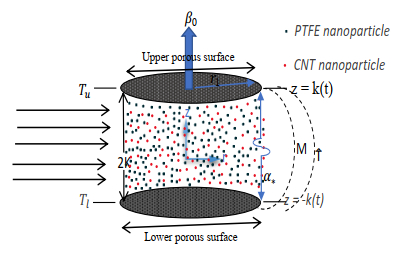









 DownLoad:
DownLoad:











